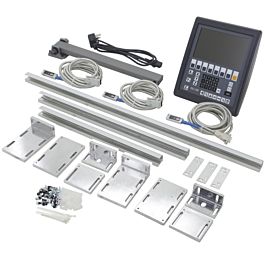- Joined
- Feb 8, 2014
- Messages
- 11,144
You might take a quick look at my installation. My preference is magnetic read heads.

 www.hobby-machinist.com
www.hobby-machinist.com


Lathe DRO
Last weekend my son informed me that it is time to put a DRO on the lathe. I guess he hasn't figured out what all those little numbers are for on the dials. :rolleyes: He has a short production run for a product he is developing so figured it would be easier to do it with a DRO. I suggested...
 www.hobby-machinist.com
www.hobby-machinist.com


